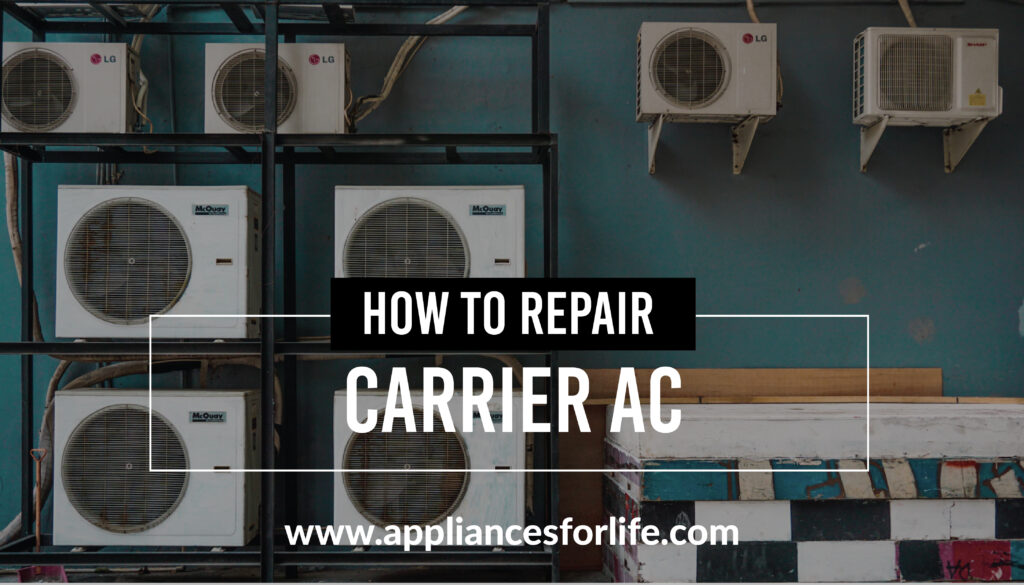- Not all technical faults need technical expertise to be fixed. A number of useful Air Conditioner troubleshooting tips will not only save you from some unnecessary expenses but will also save you from the discomfort and embarrassment that the sudden breakdown of your air conditioning system may pose.
- It is proven that most Air Conditioner problems arise as a result of poor maintenance and frequent abuse in usage. This article provides an insight into some of the troubleshooting techniques that will help you solve your Air conditioning problems without any need for professional assistance. It also provides tips on Carrier Air Conditioning system reset.
Air Conditioning is necessary for climate control. Summer may be unbearable without some cooling system while winter can be uncontrollably cozy without a heating system. According to Wikipedia, Air Conditioning is the process of removing heat and controlling the humidity of air in an enclosed space to achieve a more comfortable interior environment by use of powered “air conditioners” or a variety of other methods, including passive cooling and ventilative cooling. Air Conditioners have indeed witnessed transforming evolutions since they were first invented in the 90s. Several manufacturers including Carrier have built on this disruptive technology and improved it from a regular factory cooling system to what it is now.
Table of Contents
Toggle
Carrier air conditioning is built to stand the test of time, however, if they are ‘maltreated’ it may short live their life span and cause its user some serious discomfort. Some maintenance routines here and there are necessary if you must keep your Air Conditioning system in perfect working condition. The fact that poor and irregular maintenance causes grave damage to your Air Conditioner cannot be emphasized enough. Do It Yourself Air Conditioner maintenance can go a very long way to prevent some common Air Conditioner problems. This article has extensively expatiated on some Carrier Air Conditioner troubleshooting techniques. However, before we delve into that, let us learn a thing or two about Carrier.
About Carrier
Carrier Global Corporation is an American multinational home appliances corporation. The Carrier Corporation is currently a global leading manufacturer of residential and commercial Heating, Ventilating, and Air Conditioning systems. Other ventures of the Carrier Corporation are the sale and servicing of roughly 50 brands of products, some of which are heat pumps, room Air Conditioners, packaged Air Conditioners, furnaces, and chillers. The era of the manufacturing of Carrier Air Conditioners was championed by Willis Carrier as he was credited with inventing modern Air Conditioning in July 1902. In order to scale the production of Carrier Air Conditioners, Carrier and six other Engineers pooled an approximate $32,600 to form the Carrier Engineering Corporation in 1915 and further purchased their first manufacturing base located in New Jersey, in 1920. Carrier, which was known as the Carrier Air Conditioning company was acquired by United Technologies Corporation in July 1979. This acquisition played a great role in the expansion of the company.
Hence, in 2001, Carrier became the world’s largest manufacturer of air-conditioning, heating, and refrigeration equipment with total employment of 42,600 and a revenue of about $8.9billion. However, in the same year, the number of workers was reduced by 1000 employees after some workers were laid off as a result of the shut down of some Carrier factories. Later in 2004, Carrier acquired the refrigerator subsidiary of Linde and many more in subsequent years. A series of events has steered the course of the commercial activities of the Carrier Corporations over the years, some of those events include the influence of the government of the United States to keep one of Carrier’s manufacturing factories in the Indianapolis, instead of complete relocation to Mexico. This singular gesture and a number of others have helped the Carrier Corporation retain its commitment to the fulfillment of its Corporate Social Responsibility to the people of Indianapolis and the United States by extension.
Troubleshooting Carrier Air Conditioner
Not all faults require professional attention or some sort of expertise for fixing. Most Home Appliances users do not realize this until they have had to invest so much in maintenance and care to now discover eventually that their faulty devices could have been fixed without any time wasted and with no professional fees expended. It’s frustrating and maybe a little embarrassing to think about the time and money wasted when the solution didn’t require professional help. Adequate knowledge of troubleshooting your Air Conditioner can go a long way to provide a fix to some faults you thought needed technical expertise, hence, before you pick up the phone to call an HVAC technician for air conditioner service next time, take a moment to play detective by troubleshooting and you will surely feel good about it later. Below are some steps to follow, to troubleshoot some carrier Air Conditioner faults.
Check the Thermostat Settings
Troubleshooting an Air Conditioner often starts at the thermostat because it is the main control of an Air Conditioner. Thermostats come in a variety of options, the very basic models simply regulate both heating, cooling temperatures, and fan operation. A more advanced programmable can be programmed to automatically control and vary temperatures throughout the day for better comfort when you are at home. On the most advanced level, there is the high-efficiency stage that is also programmable when you are at work or asleep at night. Considering all the options available, there are a number of ways that your air conditioner is not running correctly. Symptoms you might notice include;
- Lukewarm air blowing from the vents at times, and cold air blowing at other times
- Higher than an expected temperature reading on the thermostat
- No air blowing from the registers/vents.
When these faults/symptoms are noticed in your Carrier Air Conditioner, it is most likely that the fault has stemmed from the thermostat, hence be sure to check it out first, before you request professional assistance.
First and foremost, ensure that the thermostat is not set for heating instead of cooling. If it is set for heating, it certainly produces hot air. If it is set on heat, simply adjust the thermostat so that it is set to cool, or change the setting to auto so it will automatically change between cooling and heating as temperatures change.
Check your Air Conditioner to ensure that your fan is not set on ‘auto’, ‘on’, or ‘off’, if the setting is on, the fan will keep running even when your AC is not cooling the air and this will eventually result in warmer air, blowing out of the AC vents when the AC is not operating. However, by changing the fan setting to ”auto”, this issue will be resolved because the blower will be automatically turned off when your AC is not actively cooling. Thus, simply select on or auto, when the fan is off. Make sure the temperature setting has not been changed to a higher setting.
If your thermostat is programmable, review your schedule for any issues, and make sure your programmed settings still match the times and temperatures you expect when you are home, away, and asleep.
If upon trying all these troubleshooting techniques and the issue persists, it may be time to put a call to an HVAC professional to check it out.
Air Filter is Dirty
The next common step in troubleshooting your AC is to inspect the filter and remove any dirt that may be lurking there. Most Air Conditioner systems are not just made of the unit on the outside of your home, there is usually an air handler unit, placed within the house. This indoor unit should include an air filter that traps dust, dirt, and other airborne particles. Hence, it is only safe to assume that this filter will attract so much dirt that it clogs its ‘pores’. As reiterated by Carrier engineers, Whether you have a basic, 1-inch furnace filter or a more sophisticated electronic air cleaner or purifier, maintenance is the key to effective indoor air filtration and proper cooling system operation. This is so because lack of maintenance will cause the vents to be clogged with dirt and this may result in some nasal infections as well as inefficiency in the functioning of your Air Conditioner system. The worst-case scenario is a total system failure of your Carrier Air Conditioner. In addition to this, it is important to run an overall cleaning of your Air Conditioner system regularly
Signs that your air filter is dirty;
- Your Air Conditioner system will not cool as it should, hence your home will be warmer than normal
- Airflow from the cooling vents will be less than usual
- Your Air Conditioner system will have short operational systems. With this short cycling, the AC runs for short periods of time before shutting down every time.
Note that before checking the air filter for possible dirt, ensure that the thermostat is set for cooling and that the temperature setting is correct. However, If you still suspect the problem is a dirty air filter, consult your owner’s manual for instructions on removing and cleaning, or replacing your air filter, or check out our page on how to change air filters. You can discover more on how to clean Carrier Air Conditioners here.
The refrigerant level is low
If the Refrigerant level of an Air Conditioner system is low, the AC will not cool as well as it should. Every Air Conditioning system uses a chemical called refrigerant for cooling and it is usually pumped through the copper tubing, the indoor evaporator coil, and the outdoor condensing unit of an Air Conditioner system, in a continuous loop. The main function of the refrigerant is to provide coolness. It does this simply by extracting heat from the home and depositing the same outside, leaving indoor air cooler, less humid, and more comfortable.
Below are some of the signs to look out for, to detect a low-level refrigerant:
- Indoors are not cool enough
- The Air Conditioning system will run continuously non-stop or for longer cycles.
- AC turning on, then off quickly, several times in a row (short-cycling)
If after your inspections, you discover that your thermostat settings are correct and your air filter is clean, you have a leak somewhere or other issues that are causing the refrigerant levels to drop. If you suspect low refrigerant levels, contact your local Carrier dealer.
Electrical Panel Issues
Troubleshooting electrical panel issues is relatively the easiest on this list. You know that you are experiencing some electrical panel issues when there is either no air coming forth from the cooling vents or when the Air Conditioning system is not even working at all. Your air conditioner runs on electricity, so if it won’t power on, locate your home’s electrical panel (breaker box). Look for a blown fuse or a tripped circuit breaker that isn’t in the ON position. You may only need to flip on the circuit breaker in some cases but before you do that, you should try to discover why it flipped off in the first place because. Most of these trips occur as a result of some wrong connection somewhere in the house. Thus, electrical troubleshooting needs to be carried out in order to locate the source of the issue otherwise, the circuit breaker may keep tripping. It is important to note that while you do this, you should exercise extreme caution. If it is a blown fuse or a tripped circuit breaker, make sure you are comfortable and competent to safely replace the fuse and/or reset the breaker – if not, consult a qualified professional. Do not attempt to troubleshoot electrical issues yourself.
Condensing Unit is Faulty or broken
The condensing unit of a typical split-system central air conditioner sits outside your home. It is made up of the outdoor coil, the compressor, the condenser fan, and its electronic controls. Whenever you notice any of the faults listed below, know that it is time to troubleshoot your Air Conditioner.
- Unit not cooling enough or at all
- System experiencing short cycling. i.e turning on and off rapidly.
- System running unusually too long
- Frost or ice on the coil or copper refrigerant tubing
- Condensing unit not turning on at all
As was the case with evaporator coil issues, a condensing unit might have an excessively dirty coil or refrigerant leakage. Additional issues with the outdoor condensing unit might include a faulty compressor, a failing condenser fan motor, or a faulty run capacitor. Most of these air conditioner problems require a professional. Do not attempt to troubleshoot refrigerant or electrical issues yourself.
How to Reset a Carrier Air Conditioner Unit
Like most air conditioning systems, Carrier Air Conditioners provide climate control for homes, offices, and public spaces, and this they do, excellently. However, there are some rare occasions when they aren’t working as great as they should or maybe they aren’t just responding as they should input via the control panel or remote. Once you discover these malfunctions, you may need to reset your Air Conditioner system. Resetting the air conditioner re-starts the internal computer and often restores the unit to normal working order. However, exact instructions will vary depending on your model of Carrier air conditioner. To reset your Carrier AC unit, follow the steps listed below;
Step 1
Locate the ”Reset” button on the control panel. The reset button on most Air Conditioner units is very small but in most cases, you will find it beneath the digital display
Step 2
Press and hold the reset button down for 3 seconds and then let go. If your unit does not respond to this, this one time, try step 3
Step 3
Press and hold the “Reset” button down for another 3 seconds — this time a light should flash on the display.
Step 4
Wait a moment while the unit resets. Minor technical problems should be cleared.
FAQs
How does a compressor lock-out switch work?
A switch inside of a compressor keeps track of the pressure caused by materials in the tank of the device using the compressor. If this pressure reaches dangerous levels the switch monitor identifies this and shuts the compressor down.
How can I easily prevent Air Conditioner problems?
One of the ways to eliminate Air Conditioner problems is to install a programmable thermostat and learn how to use it. When you eliminate issues with older control systems by installing new thermostats, you can save energy and even derive better efficiency. You can even get thermostats that can be controlled remotely using your smartphone or tablet.
Why does my Air Conditioner need more refrigerant each year?
An Air Conditioner refrigerant does not need constant recharging. If you are constantly experiencing refrigerant exhaustion then your AC unit may be leaking and it needs repair. Leaking refrigerant does not only cause your unit to lose cooling capacity and use more energy, but it’s also very bad for the environment. The release of the chemical composition of a refrigerant into the atmosphere has been proven to be catastrophic to the ozone layer.
How often should I have my air conditioning serviced?
It should be serviced a minimum of once a year, with periodic inspections up to 4 times a year. We suggest scheduling a consultation with a leading HVAC service company that has a respected industry certificate.
20 MINUTES
ESTIMATED TIME DESIGNING AND UPLOADING THIS ARTICLE
10 HOURS 26 MINUTES
ESTIMATED TIME RESEARCHING AND WRITING THIS ARTICLE
You Might Also Like

How Does a Top Loading Washing Machine Work?
Knowing how each washing machine type works will give you a lot of control over every situation if problems arise, especially when you’ve never been familiar with them. If the question ‘how does a top load washing machine work’ has been ringing in your head

Why is Tankless Water Heater Installation so Expensive?
Tankless water heaters have gained popularity recently due to their energy efficiency and endless hot water supply. However, their installation costs have left many homeowners scratching their heads. With tankless units, water is heated on demand as it flows through the system, saving space and

How to Use an LG Front Loader and Top Loader Washing Machine?
Washing machines are a great appliance to have around the house because they make our domestic chores easier and more convenient, most particularly doing laundry. For many years now, people have stayed loyal to the brands they believe have always given them everything they’ve ever

Top 5 Best Tankless Water Heaters for a Large Home
Some appliances have become so important that they are no longer considered luxury items but necessities. The water heater is one of those necessary appliances for every household nationwide. They’re so important that a report from Energy Star reveals that 7-7.8 million units of these

Top Appliance Repair Companies
It’s okay for your appliances to need repairs at some point, after all, they’re not built to last forever. However, when this happens, it’s very important you have the right knowledge on how to repair them or you know the best appliance repair companies. This

Knowing how to choose a range hood is important knowledge everyone with a cooking range in their kitchen space has to be familiar with. In our range hood buying guide, we’re going to be looking at the different factors involved in how to pick a

American Made Washing Machines
The United States has played a significant role in the global evolution of household appliances in manufacturing and consumption. This article will be discussing some of the best American-made washing machines. American Made Washing Machines Comparison Table Washing machines are gaining widespread popularity due

What Can You Do with a Food Processor?
The kitchen is one place in the house where quality time has to be spent because that’s where cooking activities go down. This has made the kitchen one of the most important and busiest places in the house. Cooking can be fun, especially for those

3 Easy Steps To Juicing Apple Juice In A Juicer
Research has repeatedly shown that apples contain various impressive health benefits and this is why they are the most widely consumed fruit globally. Apples are found in several kinds, from Red Delicious, Fuji or Gala, to tangy green ones, like Granny. Also, apples are incredibly

Best Blenders for Dosa Batter in the USA
Making dosa batter with blender used to seem impossible until high-powered blenders came into play. If you’ve been looking for the best blenders for dosa batter in the USA, this article is all you need. There’s a reason why regional or country-specific meals are now

